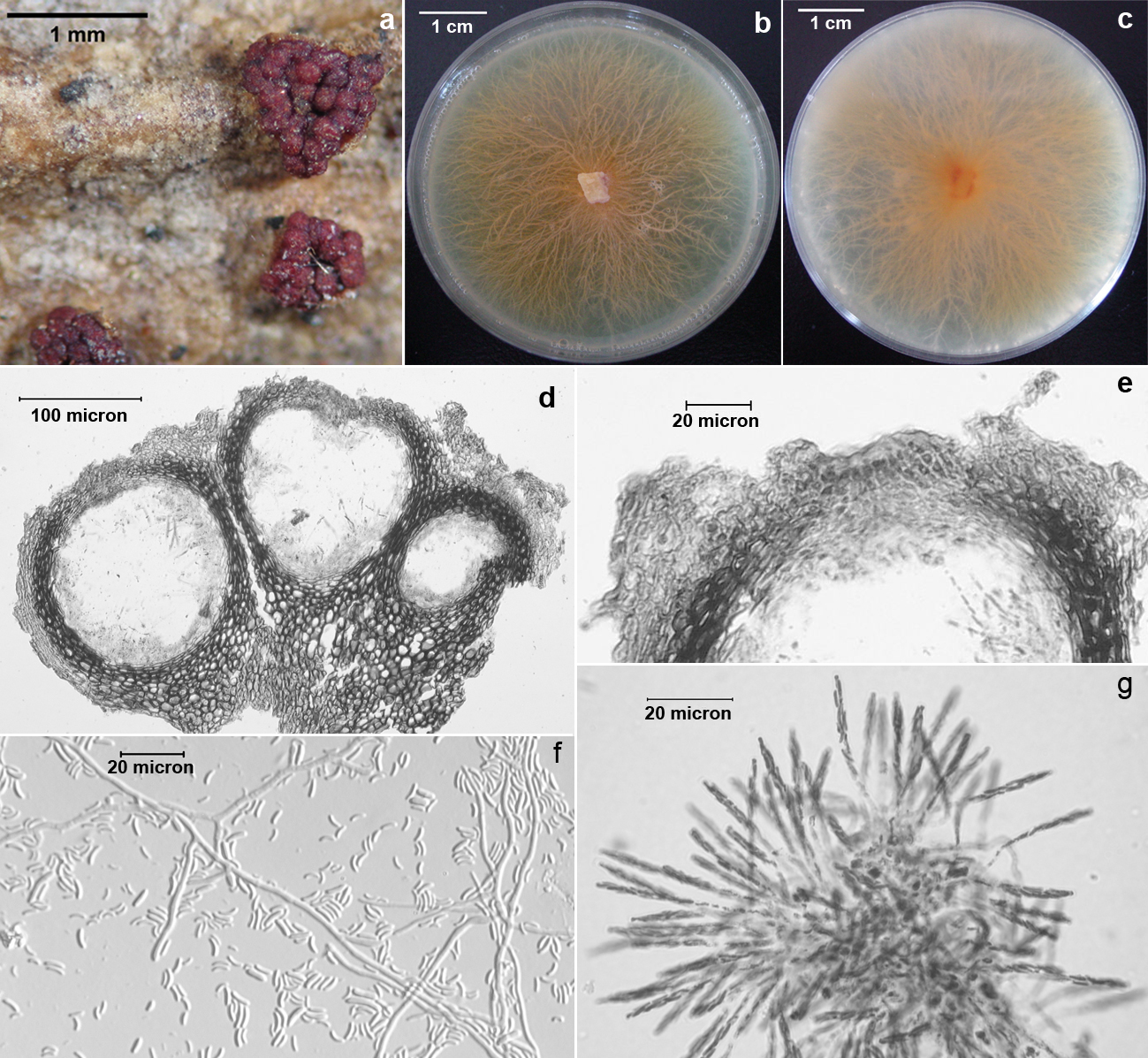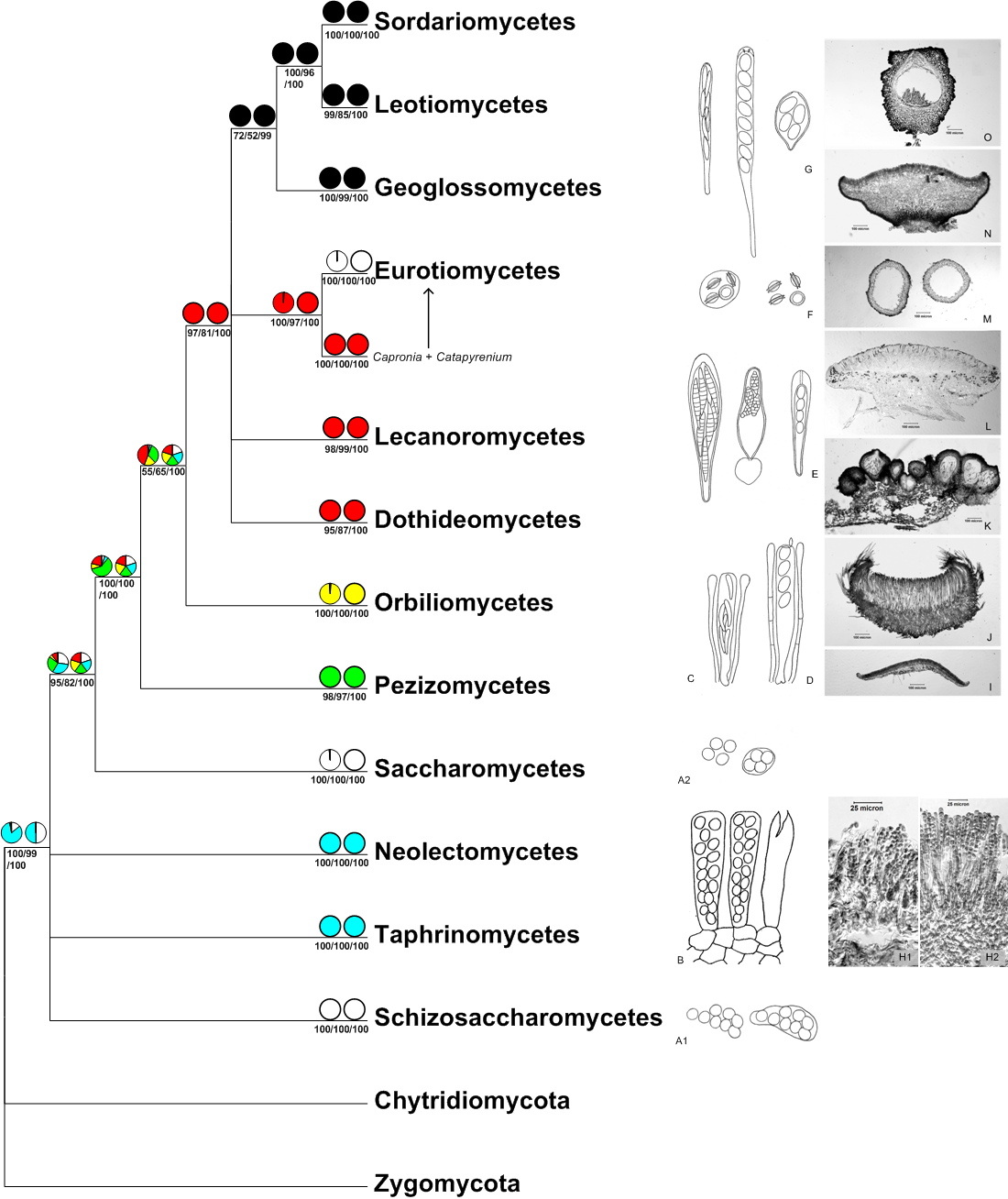Research Interests and Results
Research interests
Research has been focused on morphological and molecular approaches to systematics of certain groups of ascomycetes (the families Bionectriaceae, Nectriaceae, Pyronemataceae, Helotiaceae and Hypocreaceae); species diversity of certain other groups of ascomycetes from different areas of China; as well as DNA barcoding of selected groups of ascomycetes.
Research Results
In the past 40 years, 180 research papers, 5 books were and chapters in other 8 books published. Eleven new genera and more than 180 new species were established. Combining the traditional methods with molecular techniques, taxonomic, nomenclatural and phylogenetic problems on certain groups of ascomycetes were reasonably clarified. Our work on investigation of natural resources, species diversity, DNA barcoding and molecular systematics provides a basic information for the related theoretical research and is useful to fungal utilization.



1) Research on compilation of “Cryptogamic Flora of China”: Six volumes of “Flora Fungorum Sinicorum” (Peronosporales, Sclrtiniaceae + Geoglossaceae, Hyaloscyphaceae + Sarcoscyphaceae + Sarcosomataceae, Sporidesmium + related genere, Nectriaceae + Bionectriaceae, Pyronemataceae) were completed. Other two volumes (Helotiaceae, Hypocreaceae) are in progress.
2) Taxonomy of the family Helotiaceae: Studies on taxonomy and phylogeny of Helotiaceae were carried out based on morphology, anatomy and sequence analyses of 28S and ITS rDNA, β-tubulin and calmodulin genes). Seventeen new species and 8 new records for China are found. Species concepts in the Hymenoscyphus albidus complex, H. microserotinus complex and the genus Chlorencoelia, as well as some related fungi were solved.
3) DNA barcoding of the family Nectriaceae: For rapid and accurate species identification of fungi in Nectriaceae, using 34 well-established species and 9 candidate DNA markers (ITS, 28S rDNA, β-tubulin, EF-1α, EF3, etc.), the supplementary DNA barcodes of the family were selected. As the results, β-tubulin and EF3 genes were suggested to serve as the barcodes for Nectriaceae and the combined EF-1a & RPB2 genes were selected for recognition of species in the genus Neonectria sensu lato.
4) Phylogeny of the family Nectriaceae: Based on sequence analyses of ITS, 28S rDNA and β-tubulin gene, the relationships among genera of the family were explored. Our results show that the genus Cosmospora is not monophyletic, and that three distinct lineages or independent groups were recognized within the genus, i.e. Cosmospora sensu stricto, Chaetopsinectria (newly established genus) with Chaetopsina anamorphs, and Volutellonectria (newly established genus) with Volutella anamorphs.
5) Taxonomy of Hypocreaceae from China and selection of DNA barcodes for the family: As currently achieved, 16 new species and 12 new records for China were found.
6) Fungicolous fungi from China: The fungicolous ascomycetous fungi reported from China were briefly reviewed. Based on literature search and our own work, 132 species of nonlichenized fungicolous ascomycetes are so far known from China. Among them, 63 species grow on fruitbodies of Basidiomycota, 38 species are reported on Ascomycota, and the rest of taxa either do not show host specificity or their host range was unclear.
7) Preliminary study on phylogeny of Ascomycota based on sequence analyses of 18S rRNA secondary structure: Using 18S rRNA secondary structure as phylogenetic signal, our results indicated that Geoglossomycetes as an independent class is closely related to fungi of Leotiomycetes possessing a similar ascus type. The possible evolutionary route of major types of asci was investigated.



